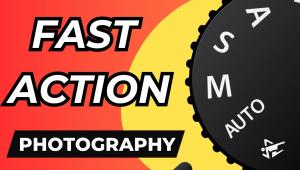Bronica Zoom Lens Duo
I shoot over 90 percent of
my work using medium format cameras. Like many portrait/ wedding photographers,
I envy the 35mm shooters. They've got it all--long lenses, motor
drives, zooms, fisheyes, etc. But watch out 35mm, because all these
features I just listed can be yours now in medium format. |
|||
Both lenses make use of aspheric
elements, which are usually used to improve sharpness and reduce distortion
in the corners, especially at shorter focal lengths. They also increase
the illumination and prevent vignetting in the corners. The 100-220 lens
makes use of one Hybrid Aspheric (glass plus other materials), the shorter
lens has two. The long lens has 16 elements in 13 groups, the short one
11 elements in 10 groups. During the time I had the lenses, I shot a range
of films from slow slide film (Kodak E100 SW) to fast color negative (Fuji
NHG800). I'm going to make some comments that apply to both lenses
first, then take each one individually as they are very different lenses. |
|||
The Bronica Zenzanon PE45-90mm
f/4-5.6 Aspherical. This is a cool lens which has a couple of features
that are unique. Hold this lens in your hand and rack it through the zoom
range. You'll see the front group of elements first retreat back
in and then come right back at you--it's basically in the same place
at 45mm and 90mm, sliding in and back out. Turning the focusing ring and
the lens, of course, moves the elements out the closer you focus. Now
the cool part. While technically not an internally focusing lens, Tamron
(noted lensmaker and parent company) has designed the lens so that the
outside barrel does not move. All these lens movements and gyrations take
place by the lens moving and turning on the grooved inside section of
the barrel. What does this mean to you, Joe Photographer? Plenty. Slap
your lens shade or filter holder on the front of the barrel and it stays
put, just how you want it. This is very important if you're using
any filter in front of the lens that can be oriented just one way--like
a polarizer or a graduated filter. Your pro lens shade or matte box will
also remain the same. I have a 35mm zoom that does not use internal focusing
or a neat trick like this lens and the bellows shade swings wildly about
the front of the lens during focusing. Be advised--it's a good design
feature. |
|||
Lens speed is a major consideration
in zoom lenses. Their complicated designs, size, and number of elements
often dictate rather slow speeds. In this case, we've got a lens
that starts at f/4 as a wide angle and tops out at f/5.6 at 90mm. A look
at the Bronica lens line for this series of cameras lists the standard
lens as a 75mm f/2.8 chunk of glass. The 60 and 50mm versions also top
out at f/2.8 and the 40 lists a maximum speed of f/4. So while all of
these lenses are considerably faster, it also means you need to buy three
or four lenses instead of one. There's always a catch. My quick
figuring shows you'd spend about $4500 street price for four lenses
from 40-75mm. The street price of this lens is a remarkably low (I think)
$1450. Buying a lens that offers all this one does at that price is an
outright bargain. My suggestion? Buy the 75mm lens for less than $800
and get the zoom. It's faster at the shorter focal lengths, takes
up less space in your bag than a bunch of lenses, and gives you that exact
cropping you need for slide film. |
|||
Before discussing the longer
lens, let me make a couple of comments that apply to both and the camera
operation. Both lenses focus by turning the ribbed front ring and zoom
by turning the rear ring. Bronica has made the ring for zooming rougher
than the focusing ring, but I still found myself confusing the two rings.
I'm sure my little pea brain would get used to it with more extended
use, but I'd like to see the zoom ring made even courser or some
way easier to differentiate from the focusing ring. While this is not
a report on the entire camera, just the lenses, I'd like to make
mention of the AE-III prism finder. This is an absolutely first-rate piece
of equipment. You can set the film speed on a large and easy to use dial
on the left, then set another dial to auto and the camera becomes completely
automatic with Aperture-Priority TTL exposure. Set the switch to manual
and use the meter and set the controls manually. It even has the option
of spot or average metering and a memory feature that at first puzzled
me. How's it work? In a word, great. |
|||
Tamron touts this lens as the
ideal portrait lens. Being primarily a portrait photographer, I can say
that the idea of having one lens with the most often used focal lengths
is quite appealing to me. I have a friend who shoots 6x7 format and uses
a 100-200mm zoom lens in that format for all his studio portraiture. That
lens is slower and costs about two times as much as this lens. This lens
goes for about $1900, which is less than many single focal length lenses
sell for in medium format, so again I think that's a remarkable
bargain. |






































